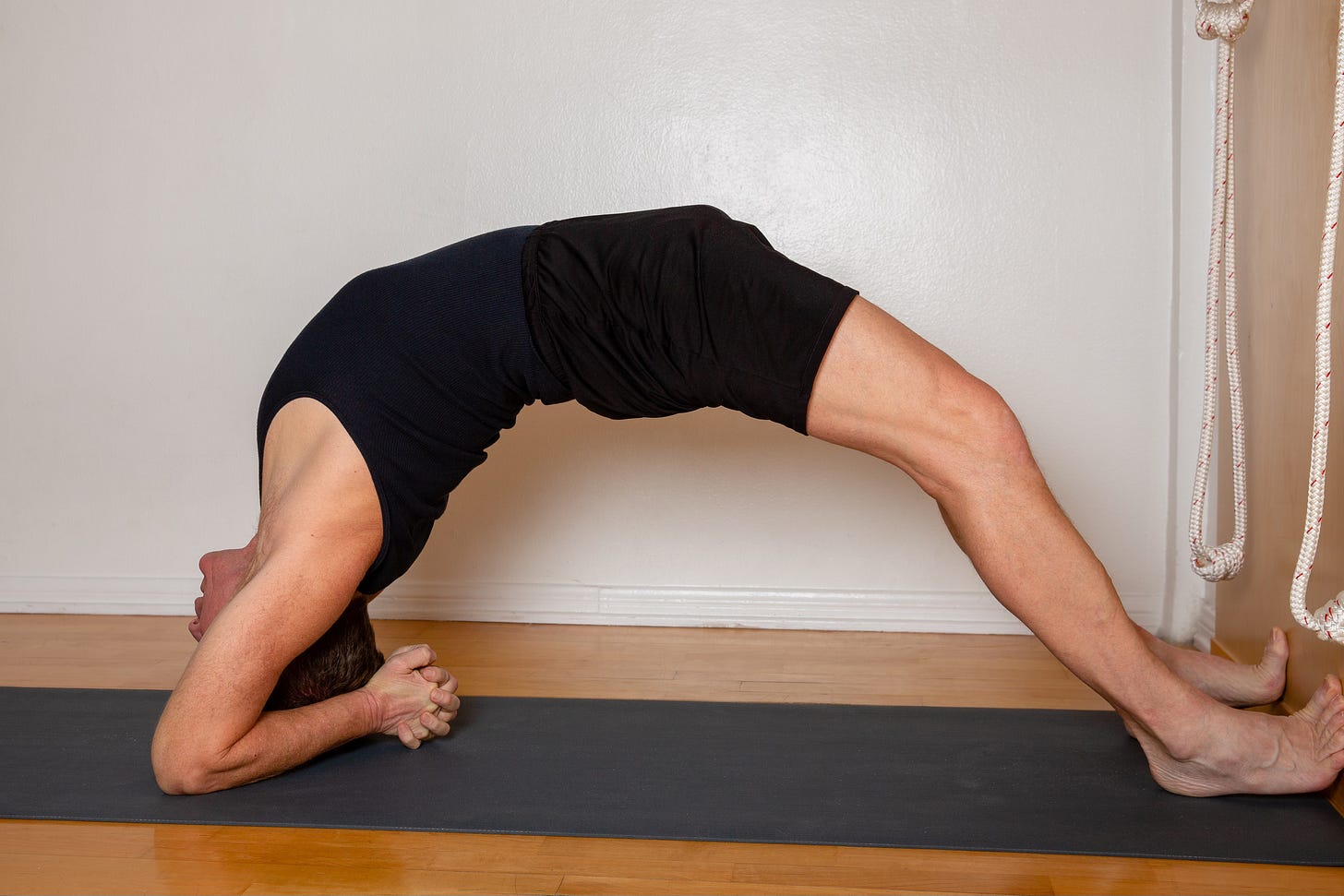
As a student, practitioner and teacher of Iyengar Yoga I can certainly attest this to be true — provided access to the practice is also accessible.
Accessible (Dictionary.com 2024):
easy to approach, reach, enter, speak with, or use;
able to be used, entered, reached, etc.;
suitable for disabled people to reach, enter, or use, as a result of design modifications;
readily understandable;
obtainable
The scope and applicability of this definition prompts myriad logistic considerations for self-inquiry and reflection for both students and teachers.
At a time when I had lost control and function of my body, coupled with being challenged to stand and walk, due to a diagnosis of Multiple Sclerosis (1996), I thought my freedom of independent mobility was over. My neurologist recommended I try yoga to help me manage. Transformative in my recovery, rehabilitation and ongoing health maintenance, the skillful, adaptive use of props inherent in Iyengar Yoga helped me attain the physical, physiological and psychological benefits of the practice.
Within days of being released from the hospital, with a friend’s assistance, I literally stumbled into an Iyengar Yoga studio in LA. Having access to a fully equipped ground floor studio, a welcoming reception from a skilled yoga teacher, and an asana practice tailored to my ability, helped me regain access over my body and got me back on my feet.
If claims that ‘yoga is for everyone’ are to hold true, it is vital to have access to a venue where yoga is being offered; especially for those who may be mobility challenged, or for anyone who may feel unsure, unwelcome or excluded.
Reasons why some feel yoga maybe inaccessible to them include: geographic location; perception of what yoga is; physical disability; acute or chronic health conditions; discrimination based on race, heritage, age, body image and size; sensory loss (blind, deaf, aphasia/ speech deficits); language barriers, socio-economic conditions; trauma survivors; mental health challenges; developmental learning and social interaction disorders; and a vast array of other cultural discriminations such as gender identity; sexual preference; incarceration; any combination of the above, and more.
Thankfully, most general class offerings welcome and integrate culturally diverse populations free of bias. To address specific health conditions (musculoskeletal, systemic, neurological), sometimes specifically designed classes or individual session(s) are required.
Some examples of neurological conditions I’ve worked with that can benefit from an adapted practice include: Multiple Sclerosis, Parkinson’s, post-Stroke, MND/ALS, limb amputees, persons in wheelchairs, and a wide range of other mobility and health challenges such as cancer, post-surgery recovery, mental health challenges and more.
Here are a few things to ponder when it comes to accessibility. Whatever your situation may be, if you’re new to yoga, it’s helpful to identify your motivation for embarking on a practice and how to go about realizing your goal(s).
Location
Consider geographic logistics. Is the venue reachable, designed and equipped to be usable and functional for all, including those with disabilities?
Are there transportation options (public/private)? Is there parking... for car? bike? physical mobility device?
Are there stairs? handrails/grab bars? uneven surfaces to navigate? a lift? a ramp?
If reliant upon public transportation, many providers accommodate those requiring mobility assistance devices, with lifts, ramps, and level access platforms for ease of transfer to train or bus.
Alternatively, in many locations ride-share options exist; however, I’ve taught in remote areas where this is not the case.
In rural and remote areas, if unable to drive, most rely on the kindness of family, friends, caregivers and other community members for a ride.
Online and hybrid classes are amazing platforms for practicing and learning — provided one has the means, access to the internet, and yoga materials.
When facing physical challenges though, online delivery platforms can present another level of challenge for those who struggle to move independently or live in an environment that doesn’t support a yoga practice. When online, most people are alone. For those who may require physical assistance or prop support - unless someone is there to help - adjusting a prop here or there, or unmuting oneself, can be a source of monumental frustration.
Lately I am excited to be involved with a program developed by AnuYoga (a collective of Iyengar Yoga teachers) that brings Iyengar Yoga into hospitals as part of a multidisciplinary, therapeutic approach for patient recovery and rehabilitative care. Patients have access to yoga to integrate an adaptive rehabilitative practice while in hospital and under their doctors’ care.
Many colleagues also offer yoga to those incarcerated at local prisons.
Curriculum
Consider what is currently offered and how to best select or help guide students to a particular program that best addresses the individual needs and goals. I embrace input so students maintain agency over this decision.
Based on what is offered, determine a reasonable class level and if general yoga classes
are appropriate.
Is a qualified teacher available and able to adapt the practice to address and accommodate individual needs, either in a group class or private setting?
Would a group class enhance the experience? The power of being part of a community is not to be ignored. Are concession discounts or scholarships available for those facing financial hardship?
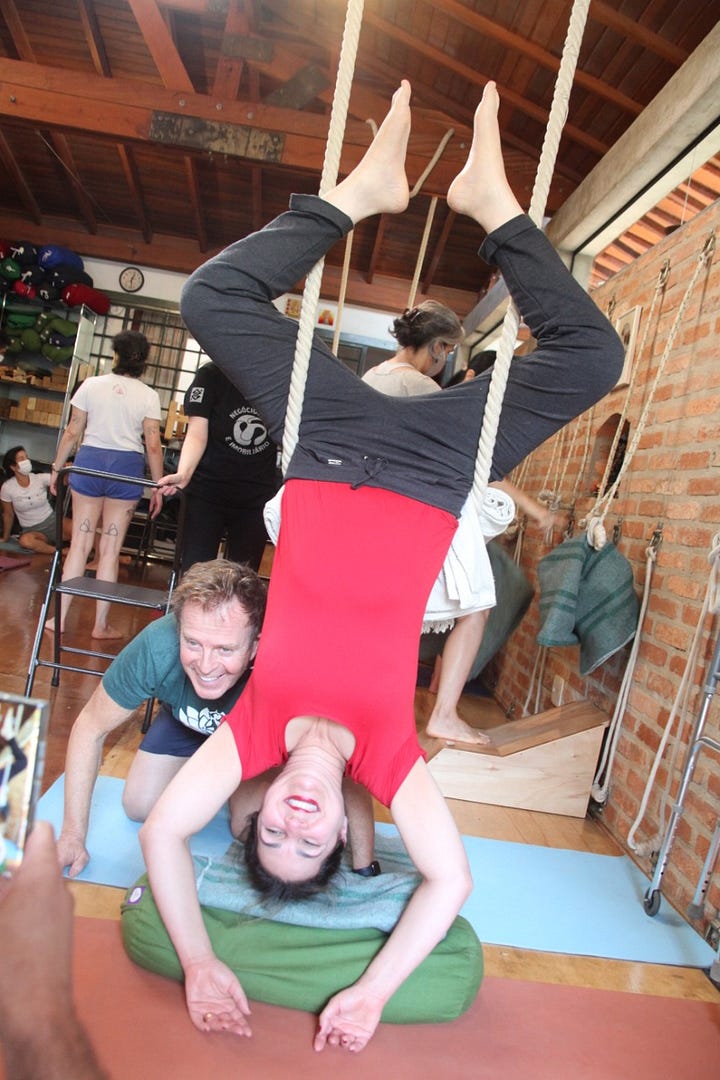
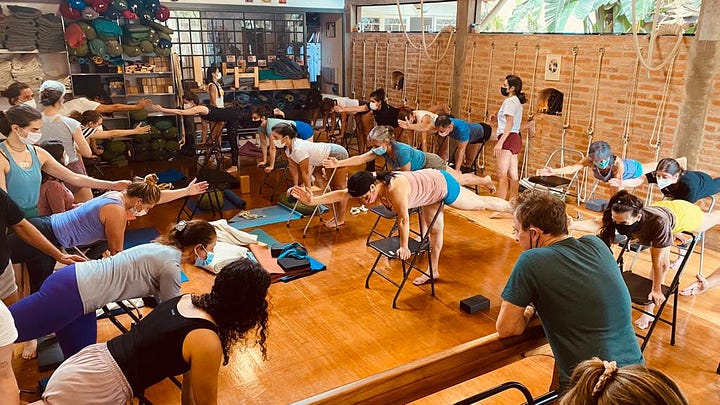
If language is a barrier, Iyengar Yoga is taught in many languages globally. In large metropolitan environments, often classes are available in various local languages endemic to the area. When teaching abroad, often there is a translator.
Communication and Collaboration
Is the teacher accessible? Is the student willing to share?
Being easy to approach, talk to, and freely communicate with, without fear of judgment, can quell anxiety, and ease feelings of being “less than” or unwelcome.
Whether addressing physical rehabilitation or cultural inequities, a wide range of challenges can be addressed through yoga by opening up communication.
If unfamiliar with a student’s situation, it’s helpful to educate myself about the student’s condition as best I can.
Venue Environment
Is the environment welcoming? Even when attending or offering classes in a temporary space like a public rental hall or auditorium.
Often when going into a new situation, many of us just want to fit in and not want to be fussed over... especially if we feel we are “different.”
Briefing studio staff members and assistants to be conscious of how they communicate with students when registering, upon arrival and while in class, can go a long way to ease uncertainty.
If everyone feels welcome and at ease, the experience of inclusion and being supported in and by community can be empowering and profound.
Aside from having access to basic yoga equipment, additional props can facilitate further depth of exploration. For instance, those who may be unable to use their legs can explore inversions (when appropriate) in a ceiling swing vs. doing independently or with wall ropes and other props synonymous with Iyengar Yoga.
Another thing to consider is toilet and dressing room access. This can help ease any awkward and potentially embarrassing situations.
A wealth of resources available to help with suggesting asana adaptations, which can be tailored to suit almost any condition.
A collaborative dynamic, rather than adopting an authoritarian
role, provides an opportunity for all involved to learn and collaborate together.
In my observation, this also broadens and sharpens the focus and lessens the tendency to categorize and rely upon uninformed or preconceived ideas about what it means for someone to live with “whatever condition” or situation.
Discovery
Once we are in a mutually engaged learning environment, the potency of discovery is exhilarating. The applied technique of any asana can help us gain further access to various body parts that may needed to be awakened, which may facilitate and be in line with our goals.
For example, digging the heels and raising the metatarsals up in bridge pose or in other back extensions, like dwipada viparita dandasana, can help access the back ribs and further lift the chest
Or, using wall ropes with arms extended overhead can help with posture.
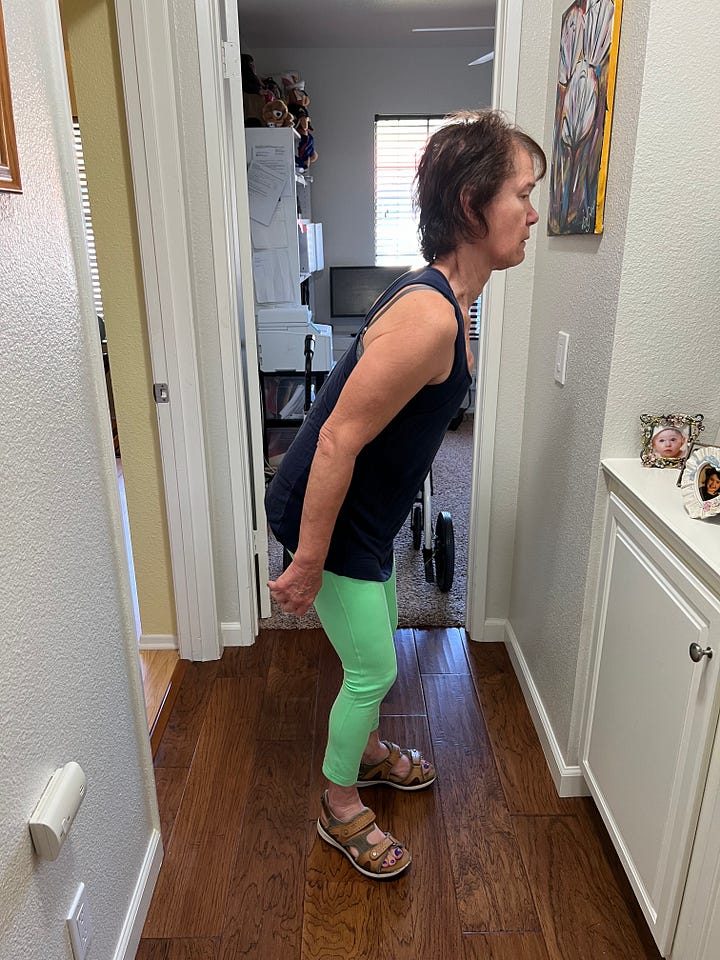
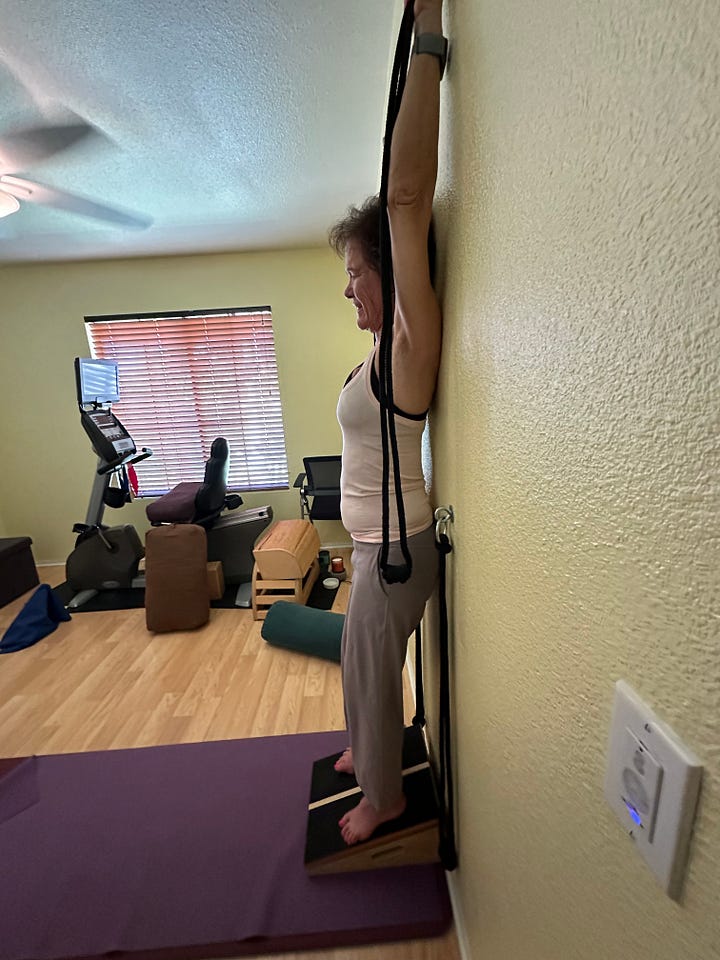
For any collaboration to be successful, mutual respect amongst all involved is a must.
A Parkinson’s student recently shared that she once showed up at a yoga/fitness class. Based on the teacher’s unfamiliarity with the scope of Parkinson’s, the student was immediately shepherded into a class for the “physically disabled.” The room was populated with elderly gentlemen with significant restrictions. Without the opportunity to communicate her ability and goals, a hasty determination was made. The student left the class and never returned. Luckily, she didn't give up on yoga and continues to practice to this day.

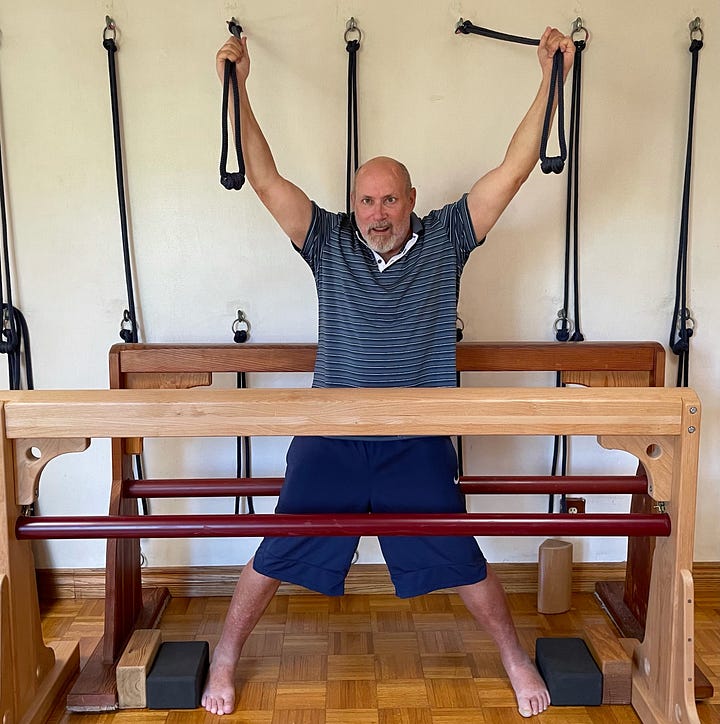
Or, a blind student who may come to class. Taking time to describe room layout, listen and learn about how they navigate in their daily life can be insightful and extremely beneficial. Together an informed decision can be made of where to be situated in class.
Another practitioner I’d recently met, had undergone right leg amputation for health reasons. It is inspiring to see him empowered by a yoga practice that may otherwise seem unachievable; a practice made possible, though, through adaptation and communication with his teachers.
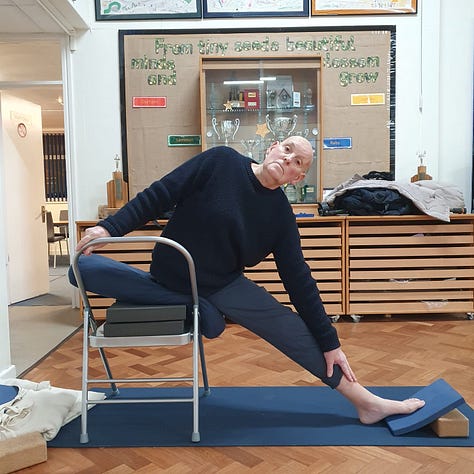

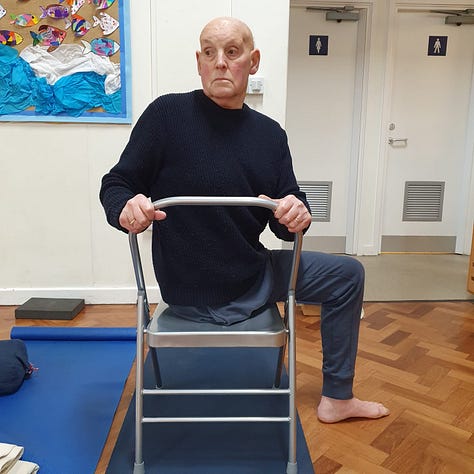
The concept of “parakaya prevesa,” (Patanjali’s Yoga Sutra, III.39), suggests that with a refined ongoing yoga practice, one obtains the potential ability to enter another’s body (siddhi). As teachers it’s unlikely we can access another’s body; however, with sensitivity one may begin to get a sense of what that person may be going through, whatever the situation may be.
When I initially embraced a yoga practice, I would not expect my teachers to know what it’s like to have MS, so I’d share the degree of some of MS symptoms I was experiencing.
Not to glorify the problem, but rather to inform and offer them insight. If given the opportunity to understand what it’s like to feel like there are bugs crawling underneath one’s skin, or burning neural pain in my right foot and hip, or the emotional isolation often associated with the condition, in turn my teachers could offer their insight and knowledge on how to help access relief.
If we can imagine what that must be like, it may provide teachers a gateway to adopt and apply a course of action based on their personal practice, knowledge and experience to offer the student further accessibility in the quest to obtain their goal.
Whether student or teacher, as we evolve as practitioners we have the opportunity to cultivate the mind — to go on learning and explore more with sensitivity, observation and sensibility. Moving from the periphery to the core, we can delve deeper into the study of breath, the mind and perhaps even gain access to catch a glimpse of the Self.
Garth McLean is a Level 3 Certified Iyengar Yoga Teacher, Certified Yoga Therapist
and Approved Professional Development Provider with the International Association of Yoga Therapists (C-IAYT), and a Registered Yoga Teacher (E-RYT 500) and Continuing Education Provider (YACEP) with Yoga Alliance. He teaches locally in Los Angeles where he lives, and travels extensively to teach worldwide as well as providing online classes. https://yogarth. com/about-me/
Article courtesy of Iyengar Yoga UK.







